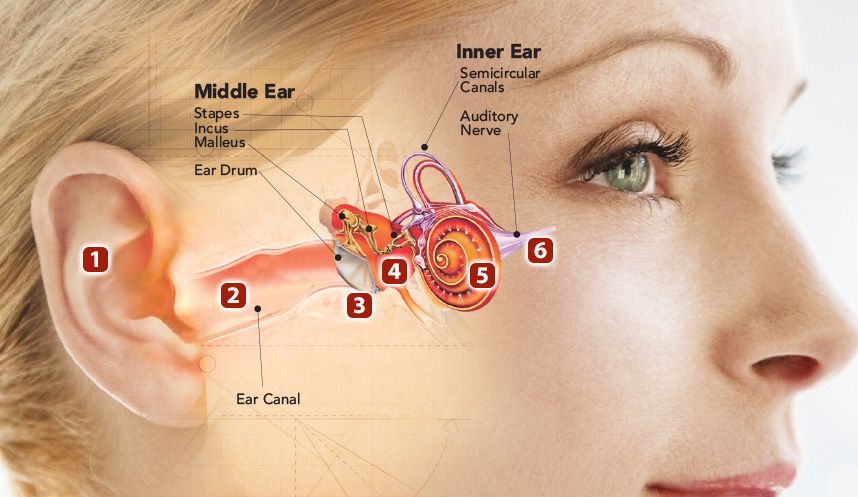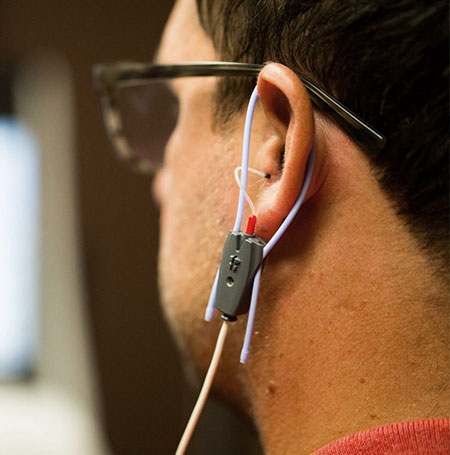
The most common type of hearing loss is known as sensorineural hearing loss. It is a permanent hearing loss that occurs when there is damage to either the tiny hair-like cells of the inner ear or the auditory nerve itself, which prevents or weakens the transfer of nerve signals to the brain. These blocked nerve signals carry information about the loudness and clarity of sounds.
A less common type of hearing loss is conductive hearing loss, which occurs when there is an obstruction or damage to the outer or middle ear that prevents sound from being conducted to the inner ear. Conductive hearing loss may be temporary or permanent, depending on the cause.
The sound waves enter the inner ear and then into the cochlea, a snail shaped organ. The cochlea is filled with a fluid that moves in response to the vibrations from the oval window. As the fluid moves, 25,000 nerve endings are set into motion. These nerve endings transform the vibrations into electrical impulses that then travel along the VIII cranial nerve (auditory nerve) to the brain. The brain then interprets these signals. The inner ear also contains the vestibular organ that is responsible for balance.






















